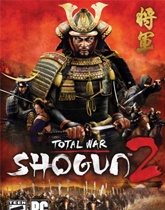 Review by Jason Dobry
Review by Jason Dobry
Total War: Shogun 2
Developer Creative Assembly
Publisher Sega
Released March 15, 2011
Available for PC (Windows XP, Vista, 7)
Time Played – 55 hours and counting
Verdict:  5/5 Gold Star
5/5 Gold Star
“CA learned from its mistakes and made a masterpiece of strategy gaming…Everything is better, and most importantly, not so much because it’s ‘bigger,’ but because they refined and streamlined in all of the right places..”
My last experience with Total War was the regrettably mediocre Empire: Total War (or is that Total War: Empire now?). It was such a step backwards so as to scare me off the quick-to-follow Napoleon: Total War; however, success in any field means learning from inevitable mistakes. TWS2‘s ascendancy or failure clings to developer Creative Assembly’s ability to learn from their missteps in the prior two entries, particularly the weak artificial intelligence, poor unit diversity, and feature bloat.
![]()
(Author’s note: This will be a long review of the single-player game. For those that detest long reviews, stop reading or be forever silent. In addition, anyone completely inexperienced with the Total War games should at least read this before proceeding; this review assumes some level of reader familiarity with the franchise).
AI: Abominable Intelligence
Let’s cut to the bone. AI has always been the anchor around the Total War franchise’s neck. TW features two subcategories of it: campaign AI and battle AI. The campaign AI guides the computer opponent’s play on the turn-based map, and the battle AI controls the computer’s ability to use its own troops. Battle AI also includes general troop pathfinding and manipulation for both the human and computer players. Despite promises to the contrary, each game in the franchise ranks at best underwhelming, and at worst, severely cognitively impaired.
Historically, CA generally ascribes to “the harder the difficulty, the more the computer cheats” philosophy from How to Cut Corners on Artificial Intelligence and Still Make Millions. I can live with cheating AI. It’s far more cost-effective to grant more money, a happier population, and tougher troops to the computer.
I won’t, however, endure a cheating AI with the brain of a rotten kiwi. On the campaign map, the AI’s shortcomings are pretty much limited to frustrating diplomacy (like breaking long-standing treaties for no clear reason) and piecemeal, haphazard attacks (like invading with a small army every turn instead of taking time to assemble a massive force). Someone important said, “Therefore, the force of those skilled in warfare is overwhelming, and their timing precise.” It may have been me. Or Sun-Tzu. CA’d better hope it was me, because it might be embarrassing if their AI regularly ignored their inspiration for making the entire fucking franchise.
As for the battle map, the failures from CA’s past efforts are many. For the uninitiated or the irrevocably vindictive, I will list their crimes:
- During sieges, troops get stuck on obstacles like walls. Units become confused and move in random directions or take over-long routes to an ordered destination.
- AI prefers to charge its cavalry into my spear wall instead of flanking or holding it in reserve. AI generally never attempts any kind of flanking maneuver and never holds any units in reserve.
- AI plays too passively. Examples: ignoring my flanking cavalry, doing nothing while my archers perforate their best troops, not using unit special abilities
- Cavalry sometimes stops mid-charge for no reason.
- AI plays too recklessly with its general and typically ignores threats to his life.
- Units sometimes ignore orders to retreat, attack, walk, or run.
- (Extra credit: add your own in the comments section!)
Empire: Total War promised mass improvements to the AI. CA lied. Perhaps they were too busy making their wretched naval battle engine look pretty for the screenshots. I don’t know if they sang a similar song prior to Shogun 2‘s release. I didn’t care because they had burned me before.
Did You Ever Know That You’re My HeroooooOOO
Promises or no, CA fixed it. They sent their alcoholic and bumbling AI to rehab, gave it a shave, found it a job, and moved it out of its mom’s house. It. Freaking. Works.
No more unresponsive units. The cavalry charges until it gloriously plows into enemy infantry. In one battle, our two forces met in the wilderness. Mine was mostly sword infantry, spear, and archers. His was spear, archers, and four units of katana cavalry. I put my spear in front, archers next, with much of my best sword infantry in reserve. As we advanced, he surged forward with all of his cavalry, and I was resigned to witnessing another vast horse impaling exercise. He had actually done it before in other battles (yes, the AI still hates its cavalry from time to time).
I don’t know if the AI ate its Wheaties for breakfast or what, but the damned thing veered its cavalry from its collision course with my spear wall and far off to my army’s right. It was…what’s that word again…FLANKING my army for the express purpose of annihilating my archers and reserves! And it nearly worked. I scrambled to protect my troops from the oncoming cavalry charge and prevailed only because his center broke before my right flank collapsed. The computer appeared to do what a human player would do: gamble. It knew it couldn’t match my superior infantry against its own and so rolled the dice with its cavalry.
This was the AI’s flagship moment in my Shogun 2 experience. Generally speaking, the AI is better but won’t put up much of a challenge to an average human player. To be fair, I don’t really expect it to fight like a pro; I just want it to make me bleed for my victory.
The computer uses its archers well and makes use of forested cover. The AI seeks the advantage of high ground and will hide its units in the trees. But it’s far from perfect. For every smart decision, it still makes one dumb one, such as sending a quarter of its army forward to its doom or unnecessarily risking its general. It doesn’t ever bother with the “loose formation” toggle, ignoring a key tactic to make units more resilient against enemy archers. It still shows some passivity during sieges and open warfare. I forgive these lapses because the most frustrating part of Empire was the poor pathfinding and unresponsive units. These problems no longer exist, and I presume upcoming patches will further refine the computer’s play.
As for the AI’s performance on the campaign map, CA has again surpassed my browbeaten expectations. The computer rarely invades with miniature irrelevant stacks, and it appears to coordinate with other factions for massive assaults on my strongholds. It frequently deploys single and expendable units to wander through my territory to raid my farms, ports, and mines, doing enough damage to annoy me but not so much as to make it worth diverting an army to vanquish it.
Total Diplomacy: Sort of
Anyone heading into Total War: Shogun 2 wanting a deep and memorable diplomatic experience should read the game’s title again. Once again, factions neighboring the player’s will inevitable declare war on him or her, frequently at the same time. I am frequently warring with no less than three factions, thus making my goal during battles not to merely win (which I usually do) but to do so while minimizing my losses. Behind that first army is usually a second and sometimes a third, and the AI shows no mercy.
Not that I want any. Diplomacy in Shogun 2 basically means postponing the computer’s gang rape for as long as possible, because have no doubt, they will come, and when they do, they come not in single spires, but in battalions.
But beneath my cynical posturing, I actually admire CA’s efforts at establishing a transparent and interesting diplomatic system. Constant war will bore, to be sure. Players have many ways to lull themselves into a false belief that AI factions actually likes them.
Some of it is standard Total War fare. Trade agreements. Alliances. Military passage. The more interesting choices are hostage exchanges and arranged marriages. Want an additional incentive for your new “friends” to honor their alliance? Demand their son or daughter as a hostage. If they break the agreement, well…to quote Mr. Blond: “If they would’na done what I told them not to do, they’d still be alive right now.” Need to cement peace one a border because you’re already at war with three factions and don’t want a fourth? Marry a daughter into their family and enjoy peace for a few years.
Just as welcome, however, is the very simple addition of a visible laundry list of factors affecting your relationship to each rival faction. The game assigns values to considerations like locality, past history, existing trade agreements, honor or lack of it, marriages, and territorial expansion and calculates a final number. This number, either positive or negative, dictates each faction’s attitude toward your own. An existing trade agreement might garner a +20; a marriage between clans bestows a whopping +100. It’s all spelled out for the player and it takes much of the silly mystery out of TW‘s diplomacy.
Even so, the computer is still fickle and tends to break long-standing alliances without provocation on my part. Wise players will take advantage of a positive relationship by moving quickly on warring rivals. In one game, my peaceful partner of 40 turns (10 game years as each turn is a season), the one who married my beautiful daughter, finally had enough of my loyalty and peaceful intentions and trade and joined the gang rape.
From a game design standpoint, this sudden and inexplicable betrayal bothered me at first. Our factions’ relationship was well on the positive side of Warm and Fuzzy when he cut his own filthy throat by invading my hallowed lands. Still…completely predictable AI players would be boring, wouldn’t they? A human player might suddenly and irrationally attack if it sensed apparent weakness. Our marriage bought me a decade of peace which I used to great effect during my two-front war, and I will show this appreciation by bathing in the blood of his firstborn.
Omit Needless Features
Empire: Total War tried many new things but integrated none of them well. Fortunately, CA heeded the criticism and either omitted or simplified each of the bloated features of Empire.
The new tech tree was over-complicated and except for the military techs, pretty damn boring. Ooo! At last I can research crop rotation and a caste system! Add to the bland tech tree the need to micromanage your libraries and scholars and…ugh…I just bored myself into stupefaction.
Shogun 2 streamlines the whole system while keeping player choice relevant (FIG). Academies and the nine-branch tech tree are gone, replaced by a deceptively simple two-branch tree. The bushido branch improves the military with new units, bonuses to morale and experience, or new special abilities. None are mutually exclusive, though players will rarely if ever have time to research them all. The chi branch upgrades everything else such as special units like ninja, metsuke (secret police), and monks, trade capacity and efficiency, diplomacy, and many others.
It’s elegant, fun, and satisfying. Players simply pick one to research and wait for it to finish. Certain improvements and other upgrades can improve either the bushido or chi research rates, but there’s no cumbersome academies or researchers to micromanage. Without the need to putter about on the campaign screen, it frees the player to languish over choices like: “Do I research fire arrows or lower my army’s upkeep costs? Do I create deadlier and more efficient ninja or grant an experience bonus to my sword-wielding infantry?” Thorough tool tips make every choice an informed one.
Empire also saw the addition of strategic areas like mines, farms, and towns to the landscape. These additions created new targets for attack and new improvements, but the main obstacle to fun factor was the need to constantly hunt and peck for each building. Shogun 2 keeps these landscape features but they are now accessible from each province’s city capital screen. Generally speaking, when it comes to game menus in strategy games, less is always more as long as they provide all key information. At a glance, I can see which upgrades are available, which aren’t and why, and what bonuses they bestow.
Finally, the minimap allows players to configure it to reveal all visible armies, navies, special units, cities, and so on, putting the days of “Where the hell did I send my trade ship?” firmly in the past. It’s such a simple solution that I’m amazed TW hasn’t used it before.
Carrot on a Stick
Ah, experience. Total War has used an experience system for as long as I can remember, but CA managed to refine the system without jacking it up. Just as before, all units gain experience in combat, improving their morale and fighting statistics. A fourth-level katana samurai unit will hold against a cavalry charge and fight nearly to the last man. It also creates interesting questions during battle deployment–is it better to put the experienced soldiers in the middle in anticipation of the heaviest fighting or to hide them in a nearby forest for a surprise flanking maneuver?
Generals also gain experience, not only making them more deadly in combat but also increasing their ability to command their troops. Higher level generals grant their army morale bonuses and a veteran general can easily destroy a greenhorn commanding a numerically superior force. Generals will also earn traits over time–commanders left to rot in a backwater filthhole might gain a drinking problem or a womanizing habit to their minor detriment. Generals repeatedly cleaving their way through bloody battles may earn a reputation for mercilessness, making enemy troops more prone to rout for fear of their internal organs.
Again, this is not a new concept to the franchise, but Shogun 2 allows players to customize each general’s abilities as they grow as commanders. It’s possible and prudent to specialize, perhaps by making one a cavalry commander and a poet (gaining a bonus to bushido research) and another a strategic bloodthirsty warrior, granting a bonus to his army’s movement and combat bonuses to his personal bodyguard. The customization makes me adore my generals, not only because they are usually family members but also because they serve a carefully nurtured role. Sadly, I needed to stick my daimyo (head of my clan) in the capital so he would start making heirs (family members constantly on the warpath are too busy for procreation), but hard decisions like these keep me coming back to the franchise.
Cornucopia
A multitude of other tiny but appreciated improvements also makes Shogun 2 a definitive step forward. In battle, a simple semi-transparent graphic shows the general’s sphere of influence (one experience bonus extends its radius), under which his troops fight harder and longer. A similar graphic clearly shows the range of bow and musket. Players can now quicksave right before battles; something certainly abusable but something that also smooths out the learning curve.
The innovative, beautiful, clunky, and shitty naval combat of Empire is mercifully absent, replaced by a simpler model in which I don’t need to tell each and every damn ship when to reload and when to fire and when to not suck at life. Medieval Japan did not use cannon or sail; the ships are more like rowed troop-carriers. Most of my naval engagements involve a brief flurry of arrows, followed by a mad rush to board each other’s ships. It’s quick, brutal, and much more user-friendly than its predecessor. To be sure, the naval battles are nowhere near as fun as the land battles, but I don’t dread them as I did in Empire.
They made covert units interesting again, as well. These units gain experience levels and customization options just like generals (one of my ninja had exotic weapons, smoke bombs, and a “old man” disguise). Special campaign-map units like ninja, monks, geisha assassins, and metsuke each have several options for use, and they are just so damn cool that I must list them here:
Ninja can:
- Scout for an army, giving them a bonus to sight distance and movement
- Assassinate enemy generals and special units (like other ninja)
- Sabotage enemy structures
- Establish a crime network in a friendly city to guard against enemy subversion and sabotage
Monks can:
- Infiltrate an enemy army and deflate its morale
- Join a friendly army and increase its morale
- Convert Christian populations to Buddhism
Metsuke can:
- Attempt to arrest and/or execute other special units
- Bribe enemy cities and armies to switch sides
- Police friendly armies and cities to guard against infiltration
(I haven’t encountered a geisha assassin yet, but I think I can guess what they might do and how they might go about it).
Unlike Empire, military units are diverse and interesting. I started with light cavalry, but then needed to choose between katana cavalry, yari (spear) cavalry, and the monstrously expensive but crushingly awesome great guard cavalry. Yari ashigaru (peasant spearmen) break easily, but are the only spear-wielding unit capable of forming a spear wall and cost little. Their samurai brethren lack the spear wall, but can sprint and will more reliably hold the line. For players preferring the sword to the spear, delight in the choice between the katana and the no-dachi (two-handed sword). I haven’t yet dabbled with the warrior monks or the hero units, possibly because I was gang-raped in my first two games when my economy folded under the weight of my massive-but-ultimately-inadequate military, but I know–I know–they’ll be awesome.
And, of course, the Shogun 2 never fails to dazzle with its graphics, whether showing thousands of troops on the march, cherry blossoms drifting through an open field, or the four seasons on the campaign map. I’ve encountered only one crash in 55 hours of play time, and can run the game with all options maxed out in all but the most massive of battles.
Here Endeth the Lesson
I can’t put it any plainer than this: CA learned from its mistakes and made a masterpiece of strategy gaming. If I don’t play it for the 300 hours I put into Medieval 2: Total War, it’s only because I put 300 hours into Medieval 2: Total War (a three-year old doesn’t help, either). Everything is better, and most importantly, not so much because it’s “bigger,” but because they refined and streamlined in all of the right places.
Email the author of this review at jasondobry@tap-repeatedly.com
Website: http://www.totalwar.com/shogun2
Minimum System Requirements (PC): 2 GHz Intel Dual Core/2.6 GHz Intel Single Core or equivalent processor; 256 MB DirectX 9.0c-compatible graphics card; 2 GB RAM; 20 GB hard drive space; 1024×768 minimum screen resolution
Recommended System Requirements (PC): 2nd Generation Intel Core i5 processor or equivalent; AMD Radeon 5000 and 6000 series or equivalent DirectX 11-compatible graphics card; 2GB RAM (XP) or 4GB (Vista or 7); 20 GB hard drive space; 1280×1024 minimum screen resolution
Reviewer’s System: Windows 7; 2.4GHz Core 2 Duo E6600; 4 GB DDR2 RAM; 1 GB NVidia Geforce 460;1650×1080 widescreen resolution


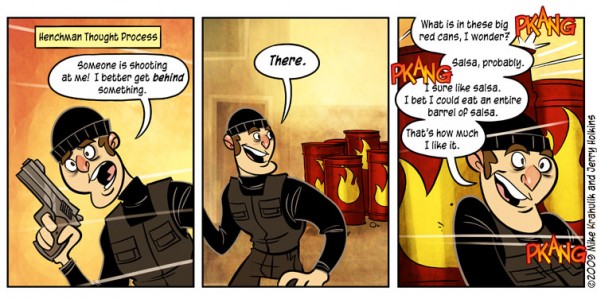
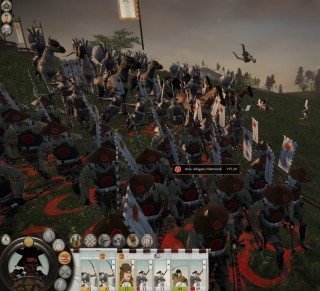
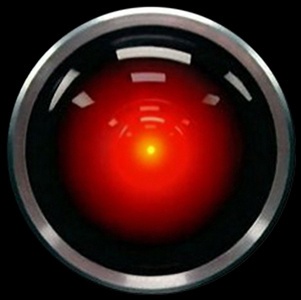
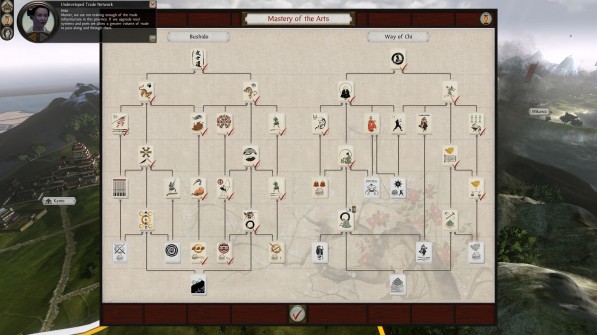
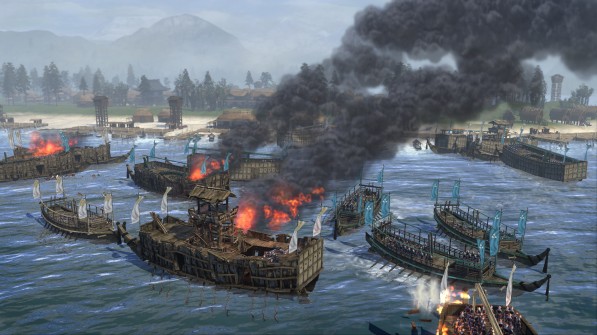
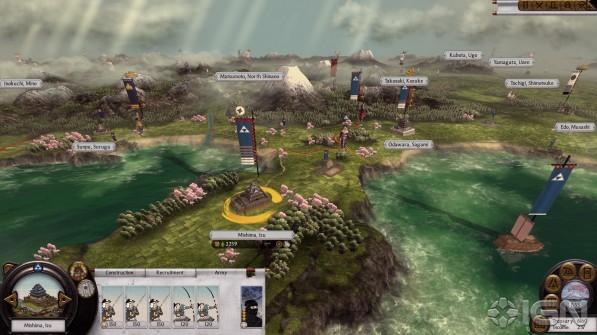
Beautiful work, Jason – and I’ll add this one to my list!
Nice work Jason. I played the demo over Steam and found I was hooked after 3 hours. It sure is purty. 🙂
Matt–Why must you turn your fine site into a brothel of lies?
Coming from somebody who adores the franchise and recognises its faults that’s high praise Jason! I wish my computer was powerful enough to run this because it really is high time I sat down and played a Total War game properly. I’ve just always found them a bit intimidating. Great review Dobbers!
Have you ever dabbled in the multiplayer?
I have not ever messed with it. I don’t know why, really. I think it’s because I usually adore the campaign map and lends the RTS battles context. They are not in and of themselves interesting enough to be the sum of my experience. That said, I should try it just to be a better person.
To CA’s credit, they included a “drop in” feature in the single-player game. You can allow other players to drop in your game during RTS battles to play as the computer’s side, and you can enter other people’s games to do the same. I don’t usually mess with it because I don’t trust humans to not act like complete assholes in my game, or perhaps I’m just afraid. After all, I’m usually already outnumbered by the computer’s army and armies; giving it human intellect in conjunction with its other “cheater” advantages seems punishing.
I won with every faction in the original STW. The most memorable victory was when I was down to one province and the pitiful remnants of a once mighty army facing towering stacks of enemy troops. I was one turn away from certain defeat. But a geisha assassin I had groomed for many years snatched victory from the jaws of defeat. It was like putting my last dollar into a slot machine and winning a $100,000 jackpot.
I later grew adept at zerging enemy generals and cavalry pursuit of their fleeing troops. The battle AI was at times pitiful. The game was great fun nonetheless.
The original STW was so new at the time that I didn’t notice the bad AI. I remember actually reading Sun Tzu and various bulletin boards so I could improve.
I admire that you stuck that $100,000 jackpot game out to the end. I usually start another game once all hope evaporates. I can definitely understand desire to throw a master assassin at a hated enemy, not so much as a Hail Mary but as a “I spit my last breath at thee” moment.